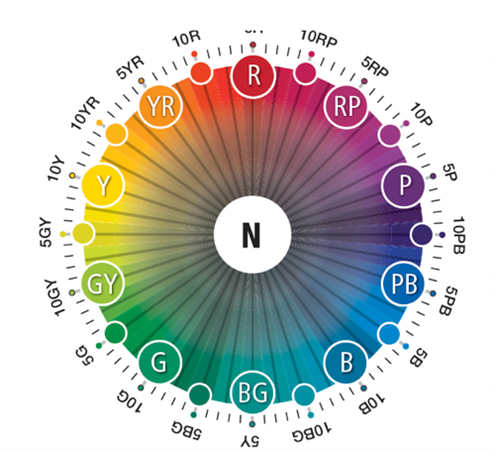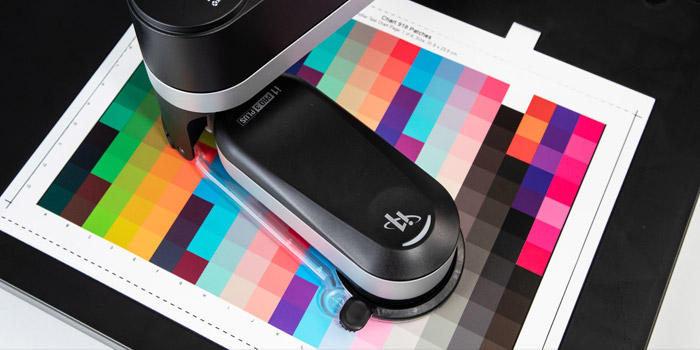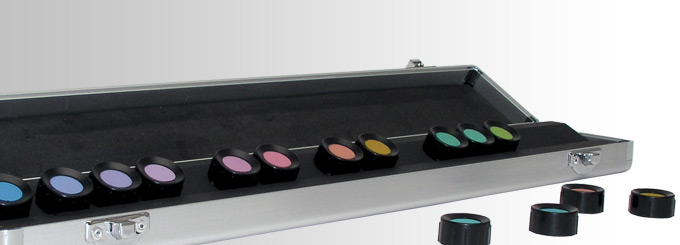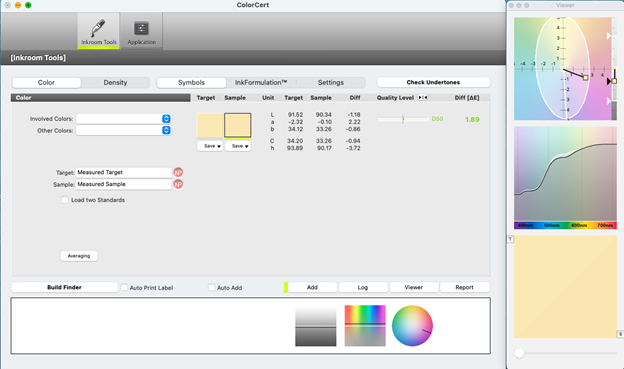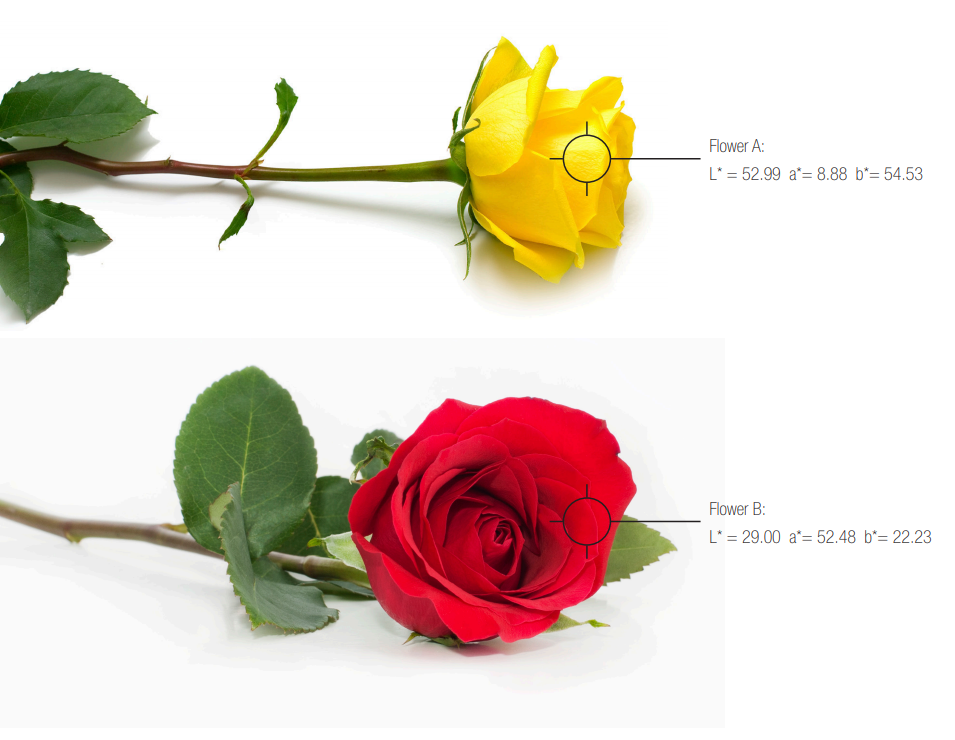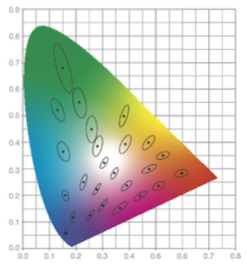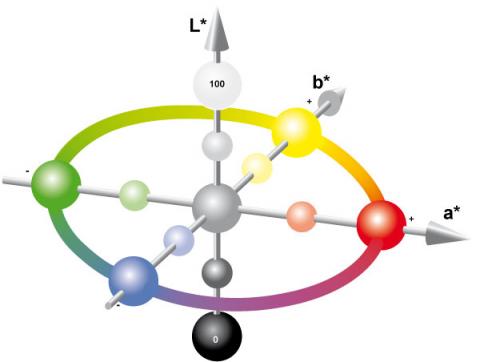When it comes to color accuracy in the world of print and packaging, having the right tools at your disposal is crucial. We understand how overwhelming it can be to choose from a plethora of options. Fear not, for we’ve simplified your decision-making process. Here’s our list of top color match devices, each catering to different needs: eXact™ 2 Handheld Spectrophotometer for Paper, Corrugated & Carton Boards Ideal for professionals working with paper, corr...
Are you feeling overwhelmed by the colorful world of spectrophotometers? Don't worry, we've got your back! We've put together a quick list of the unique features of four of our color match devices to help you find your perfect match. Let's dive right in! Ci7860: The Precision Prodigy The Ci7800 is your go-to if you're all about precision. With its cutting-edge technology, this benchtop spectrophotometer guarantees spot-on color matches. If you're into perfection, this one's for you....
Working in prepress holds a unique challenge. Even if your color workflow is tight, everything can fall apart if the customer’s file isn’t color managed. We’ve all seen it. You receive a file that the customer claims is ready to print, yet when you open it on your computer, the colors don’t look right at all. You can’t send it to print without knowing for sure, because you’re the one who will take the hit for wasted time and materials if it’s wrong....
When all of final production packaging comes together on the store shelf, it’s a brand’s moment of truth. Do the stand-up pouches, overwraps, and corrugated POP displays match? How close is the color to its standard? We know you spend so much time and money designing, proofing, sampling, printing, and shipping… so where does the color go wrong? Is it an issue with accuracy, consistency, or both? Package designs come together on the shelf. Here you see pouches, labels, cartons, and corrugated wit...
What happens when you have more than 2,000 brand colors to manage across a complex global packaging supply chain? Things get complicated! Although it may seem easier to create a new color than to dig through databases or binders of color drawdowns to find the closest match, the problem comes later when you’re faced with a huge, unmanageable library. One of our clients, a well-known fast-moving consumer packaged goods (FMCG) company, understands how easily things can get out of control. They wer...
When someone says “apple,” do you think red, green, or yellow? What do you do if a customer asks you to produce a color using descriptions that are not specific enough? Check out how something as seemingly simple as color communication can determine whether your color program succeeds or fails. A picture may paint a thousand words, but words alone do not paint a thousand colors. Circular conversations about color happen everyday. They generally start with someone asking for a sligh...
Anyone responsible for printing goods or packaging knows that some colors, like orange, are just too difficult to reproduce using only CMY inks. A fourth color, black (K, which stands for key color) is often added to subtractive color printing applications. Since C+M+Y actually creates a muddy brownish color due to ink impurities in C, M and Y, adding a true black ink creates the deep color and tones that CMY alone can’t achieve, plus adds density to the shadows. This four-color printin...
This time of year, the internet is full of Top 10 Countdowns. It’s a tradition we’ve embraced since 1940 when the Billboard published its first chart ranking the top selling recorded songs. Since then, others have jumped on the bandwagon to highlight the most popular trends of the previous year. We’ve been publishing our top-read blogs since 2016, and we’re happy to see some educational topics like color perception, tolerancing, and spectrophotometers continue to r...
Companies use optical brightening agents (OBAs), also called Fluorescent Whitening Agents (FWAs), to give their products a brighter, whiter appearance. Although adding OBAs creates a brighter product, the addition of these chemicals fundamentally alters the way the color is seen, which makes it impossible to accurately evaluate color by eye. Materials and fabrics that contain OBAs may appear similar in production under factory lighting, but those same products can look much different under othe...
Color plays a major role in our food choices. Many foods like Swiss cheese, strawberries, broccoli, and mashed potatoes always look the same. We know what to expect when we take our first bite. But what if your mashed potatoes were green? Would they taste different? Would you even try them? Why Color Analysis is Important for the Food Industry There has been a lot of research about the role color plays in how we perceive and even taste food. These studies show that our judgment of f...
Whether you’re choosing colors for a brand, creating palettes for a new product line, or designing seasonal packaging, inspiration is a key step in color selection. Inspiration can come from normal, everyday places, for example: A party. The grocery store. Sporting events. And of course, the great outdoors. Mother Nature has a knack for creating the most beautiful color palettes. “Colors for Autumn/Winter 2022/2023 contrast our competing desires for calm and comfort with energy boost...
You say color is important, but do you know why it’s so important? In reality, color is a critical element in the manufacturing process. Unfortunately, many manufacturers are realizing that getting color right is much harder than it used to be, and the brands they support are asking them to meet tighter tolerances. Here’s why. While advances in color technology – think metallic packaging, pearlescent finishes, custom fabrics and vibrant new colors – entice customers, the...
In 2006, X-Rite acquired the Munsell Color Company. Along with that acquisition came an important legacy of color science, color standards, and color vision analysis tools. Today we'll look back at Albert Munsell's contribution to the world of color and share the products his work has inspired to help us manage color in a range of industries, including packaging, apparel, footwear, electronics, cosmetics, home furnishings, paint, food and beverage, construction, and more. Albert Munsell's Role ...
Color management has caused an explosion of opportunities for new and interesting inks on a variety of substrates like paper, fabric, ceramic, transparent, and more. To ensure you can maintain accurate color when running jobs with these new applications, you need to create a printer profile for every printer, ink, and substrate combination. X-Rite offers the right tools to make profile creation fast and easy. Color Measurement Tools The i1Pro 3 Family has you covered for virtually any prin...
When customers are just getting started with color management, they often ask, "What is the difference between a spectrometer and a spectrophotometer?". With such a minute spelling difference, it's easy to make a quick typo and get the wrong answer for this color question. So...what's the difference? Spectrometers vs. Spectrophotometers What is a Spectrophotometer? A spectrophotometer is a color measurement device that is used to capture and evaluate color on just about anything, in...
In this series we’ve been discussing the many factors that impact how we see color, and what we can do to ensure the color we see is accurate. Light, retinal fatigue and background effects can influence our perception of color. Today we’ll look at the limitations of the human eye and brain, and talk about how to detect these characteristics, especially for individuals responsible for evaluating and judging color. Are YOU color deficient? Read on to find out. (Spoiler alert: There’s a test at the...
There are many things that affect our ability to see color. In some cases, it doesn’t matter if the red you see is the same shade I see. A barn is a barn, right? But for those who work in an industry where color evaluation is part of the job, it IS important… VERY important. In our color perception series, we’re discussing the many factors that affect how we see color and what colorists can do to ensure that the color they see is the color they are supposed to see. Today we’ll take a closer look...
As the temperature of light changes, so does our perception of color. As I mentioned in our last post, light plays a huge role in the way we perceive color. Today we’ll look at the science of color in manufacturing and photography; specifically how an object’s reflective and absorptive properties and viewing technology can impact the colors we perceive. To reflect or not to reflect… that is the question. The colors an object absorbs and reflects is determined by its material – is it metal, plas...
Benchtop spectrophotometers measure in transmission and/or reflectance mode to capture and quantify color on opaque, transparent, and translucent samples. Reflectance spectrophotometers measure color by flashing light onto the surface of the sample and measuring the percentage of spectral reflectance of different wavelengths at 10 nanometer increments. This blog explains how a spectral reflectance measurement works so you can determine if it will meet your color measurement and quality control ...
There are two types of color models – additive and subtractive. Today we will explain additive mixing, also known as an additive color model or additive color system. The human eye mixes the three RGB additive primary colors – red, green, and blue – in various combinations and intensities to simulate the full range of colors in nature. Reflected light that contains a mix of pure red, green, and blue is perceived as white. When no light is present, we perceive black. This is the...
According to autolist.com, over 80% of cars produced today are white, black, or some shade of gray. It’s not necessarily because bright and bold colors are more difficult to produce and match than their grayscale counterparts, they just take longer to get through the inspiration and car design process. Believe it or not, producing a new auto color can take up to five years before it makes it to the showroom floor. It’s a long, tedious process for designers, paint...
Looking for the best color measurement device for your pressroom? To help you decide, let's look at the three levels of process control to evaluate printed color. The most basic level is a visual comparison. However, since color vision is subjective, visual evaluation can lead to misjudgments, especially between press operators and under a different light source. If accurate color is important, visual evaluation will not be enough. You need to use a device. The next level of ...
There are many things that affect what we see. Optical illusions aren’t just fascinating; they teach us about how we visually perceive our surroundings. In our Color Perception Series, we shared some of the factors that affect how we see color and the impact it has on manufacturing. In honor of April Fools' Day, we’re taking a closer look at some of the ways our brain, eyes, and the environment can influence what we see. April Fool #1: Your Brain Let’s start with the power of t...
Quality control is an important aspect of any color workflow. While many of our customers use a handheld spectrophotometer for QC, there are times a benchtop spectrophotometer is a more appropriate choice. Today we’ll explore some of the reasons you might want to choose a benchtop for quality control and offer tips to ensure your QC workflow is the best it can be. Top 5 Reasons to Choose a Benchtop Spectrophotometer for Quality Control 1 - Your Color Tolerances are Tight While our handhel...
Are your customers rejecting shipments due to incorrect color? Are you identifying color issues during quality control? If your bottom line depends on color accuracy, you need to ensure your spectrophotometer is not the cause. Color drift is a big issue for a lot of companies. Even worse, many don’t even know it’s happening. Here are some ways to make sure your spectrophotometer is operating within specification to always capture accurate and consistent measurement data. Causes of Sp...
Each year we enjoy looking back to see what our customers enjoyed reading. Here are our top blogs and learning resources from 2021. Top Blogs of 2021 Some of these blogs make the top 10 list every year. Do any interest you? Color Perception Part 1: The Effect of Light This first blog in a 3-part series offers a non-technical explanation to the way we perceive color, and the role of light in color perception. How to Calibrate your Monitor in 10 Steps Are ...
The International Standards Organization has defined ISO 12647 as a set of Graphic Arts standards for printing. Included are eight parts: Part 1: Print parameters and measurement methods Part 2: Offset lithographic processes Part 3: Coldset offset lithography on newsprint Part 4: Gravure printing Part 5: Screen printing Part 6: Flexographic printing Part 7: Proofing processes working directly from digital data Part 8: Validation print processes wo...
Color measurement is used to specify, quantify, communicate, formulate, and verify color quality for color critical work. Because everyone perceives color differently, color measurement is more precise than visual evaluation. How to Measure Color Wavelength To measure color, a color measurement device called a spectrophotometer shines light onto a sample and captures the amount of light that is transmitted or reflected in the 380 nm to 780 nm wavelength range, which is the wavelength rang...
Learn about light, reflection curves, optical brighteners, and more. Illuminants Electro magnetic radiation in the wavelength range from 380 nm to 730 nm is seen as light by our eyes. Low wavelengths show as blue light, then the spectrum continues from green to yellow, orange, and red. UV radiation is located in the range below 380 nm; the range above 730 nm is called infrared radiation. The visual impression of a colored body changes by the composition of the incoming light. ...
Surface appearance can change your perception of color. Think of a glossy magazine. If the light is shining directly on the page, you may need to tilt the magazine and change the reflection angle to clearly see the colors. Likewise, a textured surface may appear to be a different color than a smooth surface of the same object. Since spectrophotometers determine a color’s spectral values by shining light onto the surface and measuring the reflectance, choosing the right instrument an...

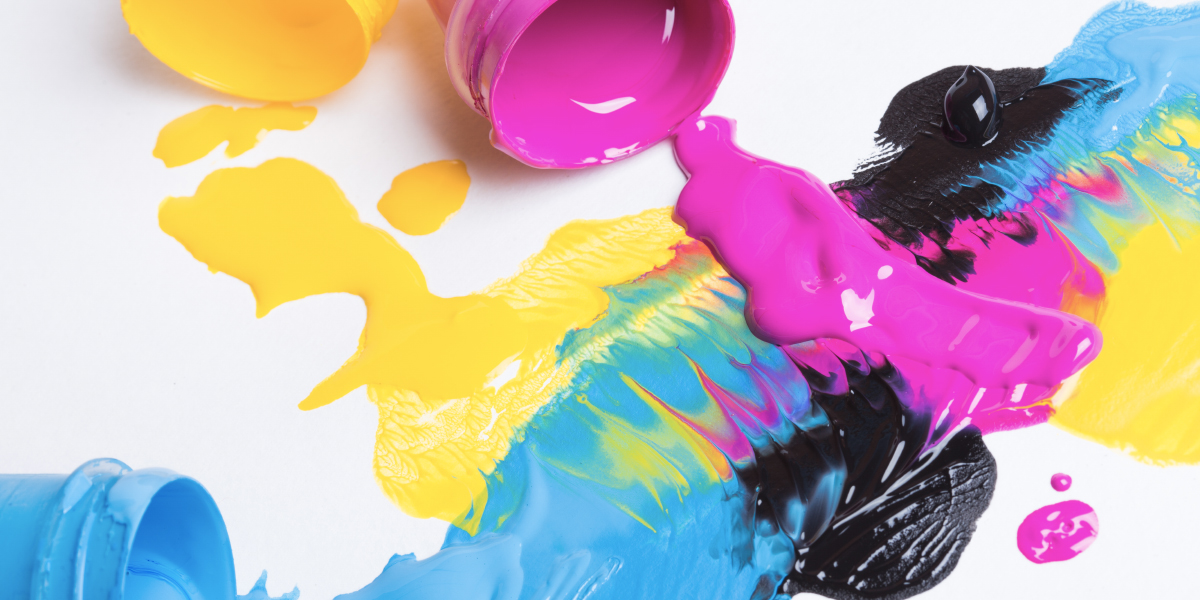

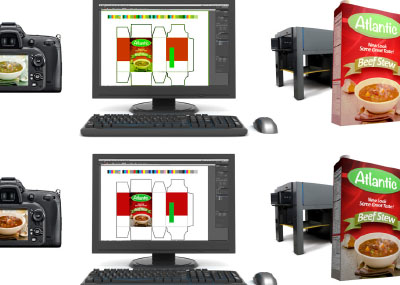
.jpeg?h=285&la=en&w=400&hash=AC6EC8E66937FAB0B91715E08CE3FBCBE0296113)


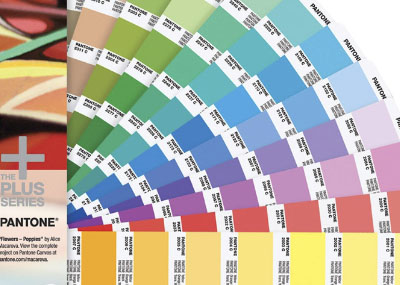
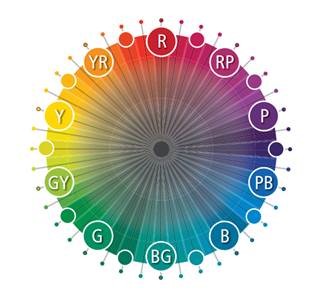
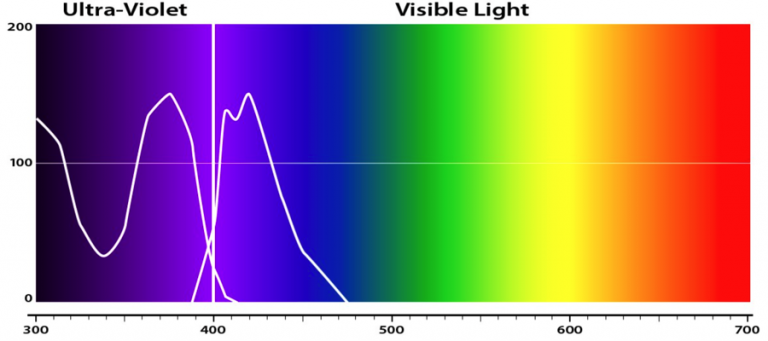

.jpg?h=285&la=en&w=400&hash=CF098B5757EE43CE3966F416E1D31AE6A67A8104)
.jpeg?h=285&la=en&w=400&hash=6F4520F30E11DA92838E11C8E55C4BFB32664563)
